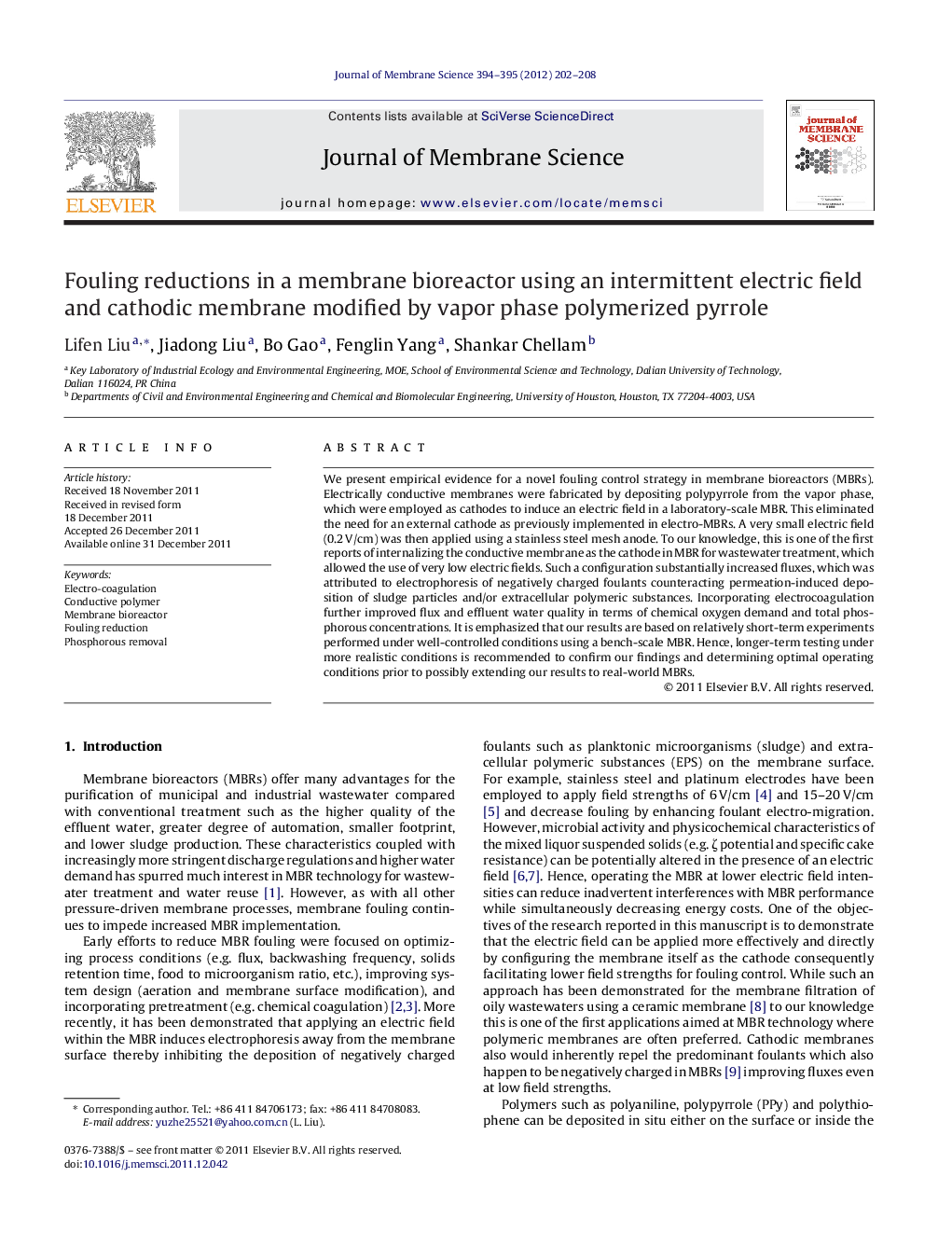| Article ID | Journal | Published Year | Pages | File Type |
|---|---|---|---|---|
| 635151 | Journal of Membrane Science | 2012 | 7 Pages |
We present empirical evidence for a novel fouling control strategy in membrane bioreactors (MBRs). Electrically conductive membranes were fabricated by depositing polypyrrole from the vapor phase, which were employed as cathodes to induce an electric field in a laboratory-scale MBR. This eliminated the need for an external cathode as previously implemented in electro-MBRs. A very small electric field (0.2 V/cm) was then applied using a stainless steel mesh anode. To our knowledge, this is one of the first reports of internalizing the conductive membrane as the cathode in MBR for wastewater treatment, which allowed the use of very low electric fields. Such a configuration substantially increased fluxes, which was attributed to electrophoresis of negatively charged foulants counteracting permeation-induced deposition of sludge particles and/or extracellular polymeric substances. Incorporating electrocoagulation further improved flux and effluent water quality in terms of chemical oxygen demand and total phosphorous concentrations. It is emphasized that our results are based on relatively short-term experiments performed under well-controlled conditions using a bench-scale MBR. Hence, longer-term testing under more realistic conditions is recommended to confirm our findings and determining optimal operating conditions prior to possibly extending our results to real-world MBRs.
► Vapor phase pyrrole polymerized membrane was conductive and more antifouling. ► With minute electric field, PPY modified membrane cathode reduced fouling. ► Electro-coagulation in MBR, increased TP removal, lowered filtration resistance.
